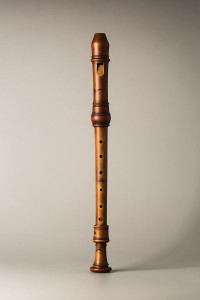Trabaci, Gagliarda Seconda detta la Scabrosetta

Maybe you played the recorder at some point in your life or watched your kids learn to play one while studying the rudiments of music. Its popularity possibly owes something to the fact that it can be made rather cheaply. (Perfect for kids.) It’s a simple device, basically a cylindrical bore made of wood with seven finger holes and one thumb hole. Unlike other woodwind instruments, it doesn’t have a complex mechanical action of keys and pads. Children’s version can even be made of plastic.
But it was the flute of choice from the 16th to 18th centuries. It probably originated in northern Italy around 1490, and there is strong evidence of its widespread use by the 16th century.
While children rarely play the larger versions, recorders come in all sizes as you can see from the video. The Royal Wind Music ensemble has 13 players and an even larger collection of instruments ranging from about 4 inches to 10 feet in length.
The recorder lacks a wide dynamic range, meaning its louds and softs are not very far apart. That, along with its mellow sound, made it less suitable for the larger orchestras of the late 18th century. The transverse flute gradually took its place.
Giovanni Maria Trabaci (c. 1575 – 1647) was an organist and composer in Naples. He produced quite a lot of music, both sacred and secular. His keyboard works are considered some of the first to be properly classified as Baroque (an era that we usually think of as beginning around 1600 with Monteverdi and the first opera Orfeo). Trabaci’s keyboard works were suitable also for instrumental ensembles like this one.
A galliard is lively court dance built on a 6-beat metrical pattern. It also also originated in northern Italy and was popular of the 16th and 17th centuries.



